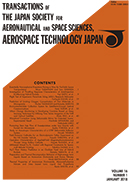A knowledge-based satellite malfunction diagnosis method that shows much promise for future applications is introduced. There are two approaches for diagnosing satellites: the sensor-based approach and knowledge-based approach. The former approach starts from the detection of sensor signals, and infers the malfunction. In contrast, the latter approach starts from the background of the malfunction origin, compares the forecasted satellite state with the observed state, and infers the malfunction. In this study, we propose a new knowledge-based approach that utilizes a database of past malfunction data. First, we compiled 95 malfunction cases related to 54 satellites. Then, the malfunctions were categorized according to the phenomenon, cause, and background among others. Next, we analyzed the categories and found specific properties. We then used a model construction algorithm, Quinlan's C5.0, for the decision tree. Finally, the construction of Bayesian networks is helpful as they execute probabilistic reasoning for malfunction prediction.
View full abstract
